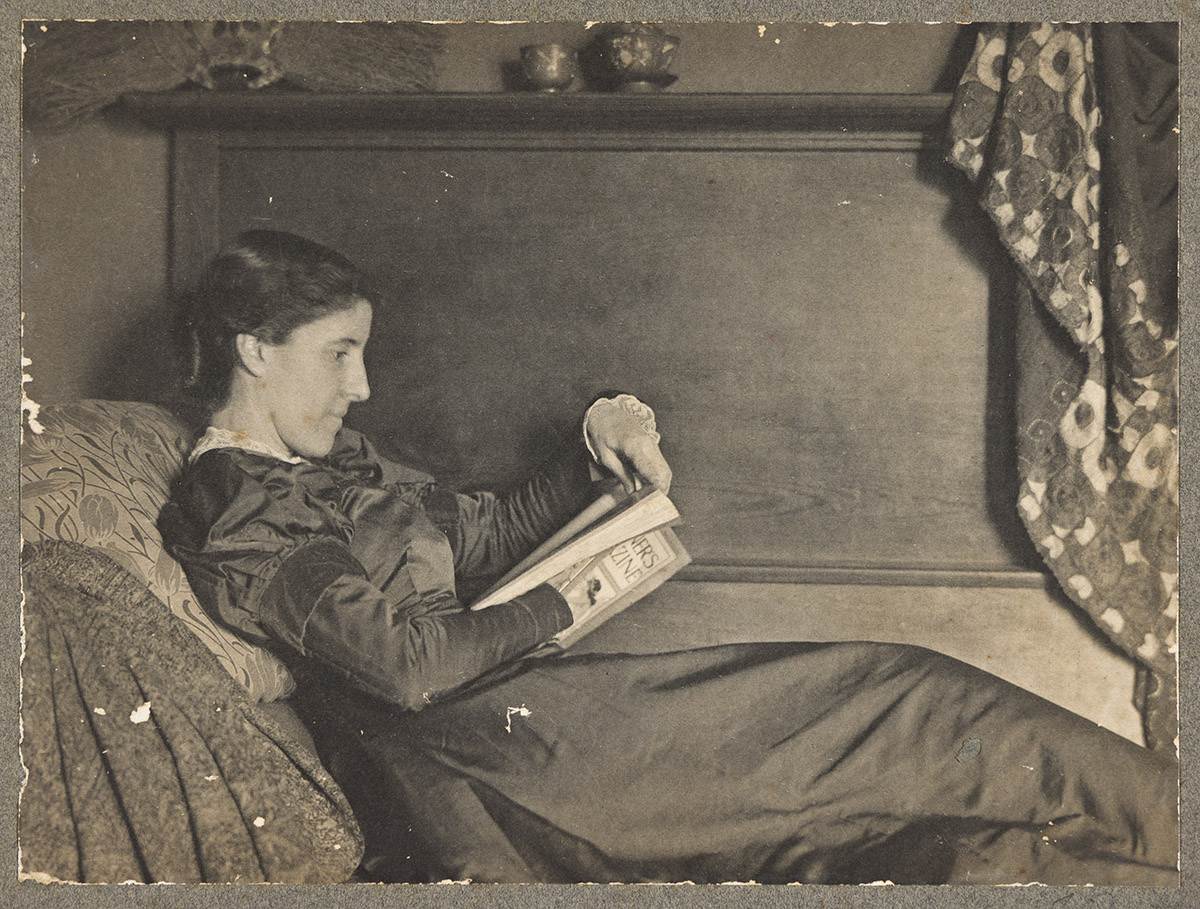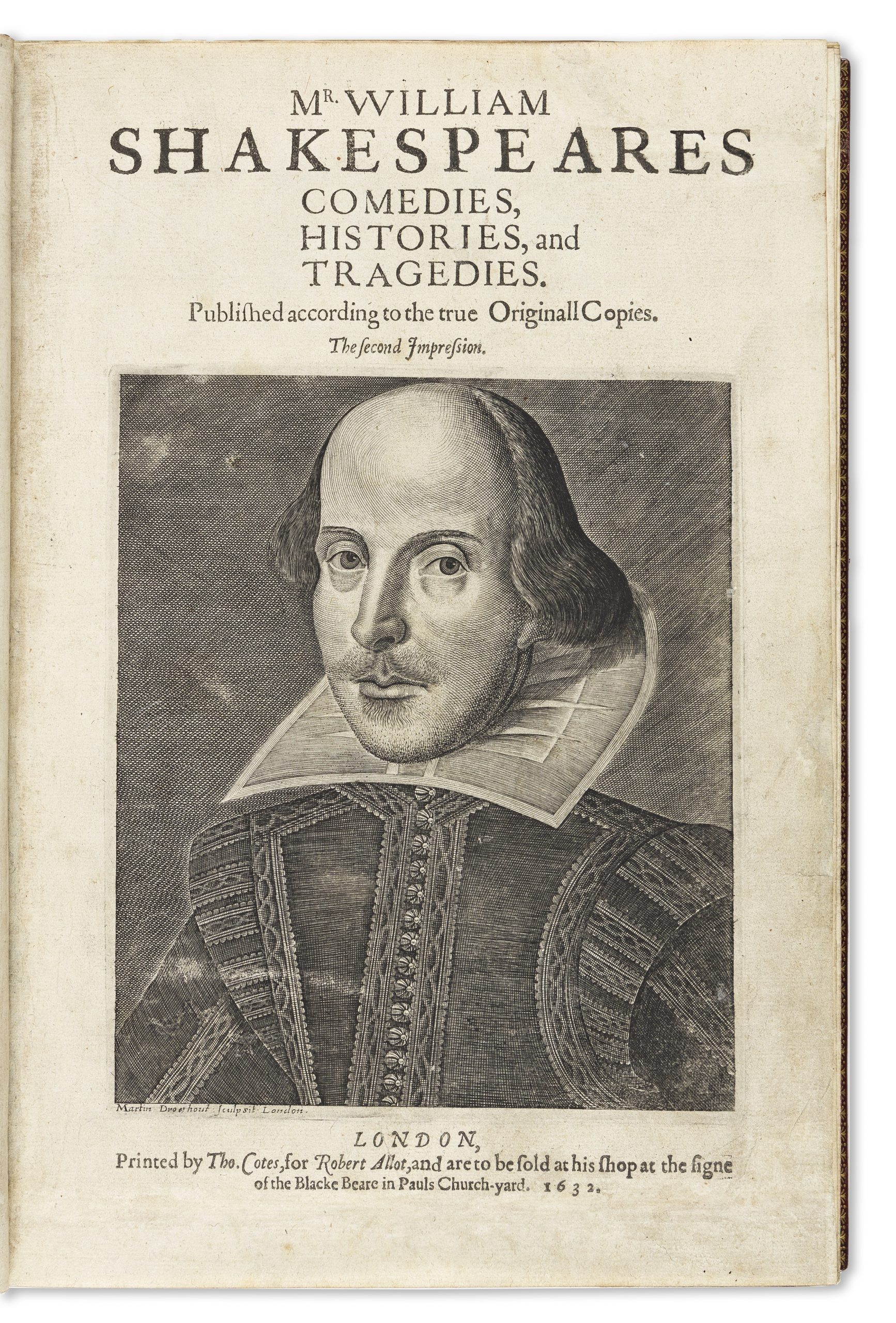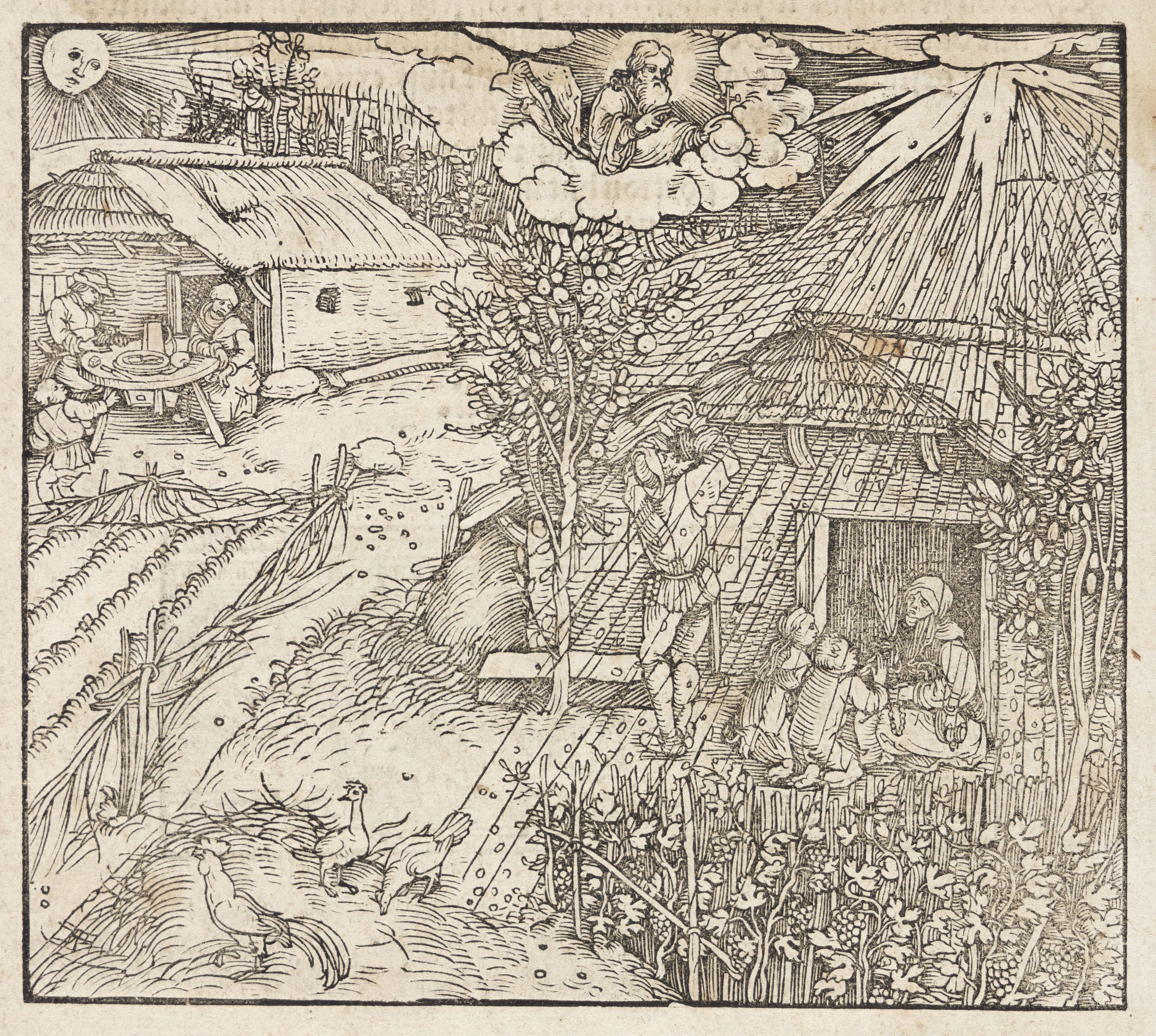Early Modern Women’s Books: Scholar Sarah Lindenbaum on Gift Books
Cartwright, Comedies, Tragi-Comedies, with Other Poems (1651): Books owned by Mary Kemeys
Sarah Lindenbaum is an independent scholar currently working on a book about the life and library of 17th-century female book collector and reader, Frances Wolfreston. She has been a secondhand bookseller, rare-book cataloguer, and assistant professor and outreach librarian for a small liberal arts university. Her research specialties include early modern women’s book ownership and reading. In her spare time, she enjoys native gardening, writing, and maintaining her 1895 Queen Anne home. You can find her on Twitter @wolfrestonward.
Below Lindenbaum touches on gift books, particularly those gifted or received by women, as well as one owned by Mary Kemeys that featured in the Focus on Women sale on June 1.
One of my favorite categories of early modern women’s books is the gift book. Whether the woman is the giver or recipient, a gift inscription reveals relationships in her life and often helps identify her where it may not be possible to do so by name alone. For the 2021 Shakespeare Association of America conference, I presented a paper on gift inscriptions in early modern women’s books. As I noted in the paper, “Gift inscriptions are characterized by phrases like ‘given,’ ‘given by,’ and ‘ex dono’ and frequently include the name of the giver and the date the gift was received.” I go on to note that
According to [Natalie Zemon] Davis, books often serve as “carriers of relationships,”and to this end, gift inscriptions both assert ownership and reflect relationships in book-owners’ lives. Most frequently, the exchange of a book occurs between two individuals, but can occasionally involve multiple givers or recipients (e.g. parents giving a book to a daughter, a grandmother giving a book to more than one grandchild in the same immediate family). Relationships commonly represented in early women’s gift inscriptions are those of husband and wife, aunt and niece, sister and sister, mother and daughter, and grandmother and granddaughter, but an informal survey reveals that they can be quite diverse.
Today’s gift inscription is located in a copy of William Cartwright’s posthumously published Comedies, Tragi-Comedies, with Other Poems (1651), forthcoming at Swann Galleries, and reads “Mary Kemeys her Booke / given her by her uncle / George Kemeys of Lanvaire / 1670.” Research by Swann’s rare-book specialist Devon Eastland reveals that the Kemeys were landowners near the South Wales village of Llanvair Discoed and that Mary’s father was Sir Charles Kemeys, 2nd Baronet (1614–1658). Mary (1652–1708) never married and was one of her uncle George’s heirs, who had no children of his own. George (1648–1696) was only four years older than Mary and gifted the book of Cartwright’s plays and poems to her when she was around 18 years old and he 22. From this, one gets the sense that their relationship might have been more one of peers than uncle and niece.

Three other books owned by Mary Kemeys are scattered throughout institutional collections in the United States, a quantity suggestive of the remnants of a private library. A 1664 English translation of Il Pastor Fido now at the Folger Shakespeare Library contains another gift inscription: “Mary Kemeys her Booke / given her by her Brother / Charles 1673.” The same inscription is repeated below in a slightly more florid version of Mary’s hand. [NOTE: EMFBO contributor Georgianna Ziegler is responsible for arranging to have this book and many others owned by early modern women digitized by The Folger Shakespeare Library.]


As an added point of interest, this book was later owned by bibliographer W.W. Greg and is dated by him 1928.
Other books of Mary’s now at the Huntington and Beinecke show that gifts were not the only way she built her presumed collection. Both are dated 1697, which is probably their date of acquisition given the pattern established by her gift inscriptions. The absence of gift inscriptions seems to say they were sought out and purchased for herself.

The Presbyterians Unmask’d (1676) and Of Christian Prudence (1691) were written by non-jurors Samuel Thomas and John Kettlewell respectively, and suggest that Mary Kemeys was among the minority of the people in the United Kingdom at the time who objected taking an oath of loyalty to William of Orange and Mary II following the Glorious Revolution of 1688. The fact that both are dated the same year suggests that she was interested in the Nonjuring schism at the time, some eight years after the couple had taken the throne. In contrast to the drama that she clearly enjoyed in her late teens and early twenties, these books, acquired when she was around 45 years old, indicate a keen interest in religion and current events.

A bit of digging uncovers a connection between Mary and Thomas Ken (1637–1711), Bishop of Bath and Wells and one of the most prominent non-jurors of the time. In an entry for the Oxford Dictionary of National Biography, Robert D. Cornwall writes, “Seven bishops were imprisoned in the Tower of London in June 1688 for declaring that the king’s use of the dispensing power, acting without parliament, was illegitimate and an inappropriate infringement on the rights of the church.” After trial, the Seven Bishops, as they became known, were declared not guilty, though those who lived past 1689 were stripped of their bishoprics.
In the second appendix of his biography of Ken, Edward Hayes Plumptre discusses and “draws inferences” from books from Ken’s library, then scattered among Wells Cathedral and sites at Longleat and Bath. “I wish I could impart to my readers something of the interest which I have felt in taking down volumes of the second group, connecting them, as I did so, with some special crisis in Ken’s life, with his travels, with the part he took in the, religion and politics of his time, with personal friendships, and the like” (v. II, 294). The “personal friendship” part is footnoted with this observation: “I note Goodman’s Penitent Pardoned, a red morocco volume, with ‘Mary Kemeys, her book’ as a singularly touching instance of what I mean. I take it to have been a gift or legacy.”

The volume Plumptre mentions is still housed at Wells Cathedral, and librarian Kevin Spears has generously shared images of the title page inscriptions. The first reads: “Legato Rev: in Xsto Palris[?] Thom: Kenn nuper Epi Bath: et Welles.” This inscription was evidently made by Ken himself, while wedged beneath it in small letters, less insistent than her other inscriptions, are the words “Mary Kemeys her Booke 1703 —.”


The juxtaposition raises the question of whether Plumptre is correct and that the book was a gift from Mary to the bishop. The fact that the book ultimately ended up with the portion of Ken’s collection left to Wells Cathedral after his death would confirm that he was its last owner. If this is indeed the case, neither Mary nor Ken bothered to mark the gift with an inscription, as Mary did with the books of drama her uncle and brother gave to her. Another possibility is that it was a shared book. Mary’s smaller signature, squeezed as it is between the narrow rules of the title page, could have been made after Ken’s larger inscription; it appears almost as if she is afraid to intrude upon it by making her own signature too prominent. However, she did sign Of Christian Prudence between the title-page rules as well, so her signature in The Penitent Pardoned may simply be a continuation of a convention she used in signing books with ruled title pages.
What seems clear is that there was a relationship between the presumed nonjuring gentlewoman and the disgraced bishop. The relationship is alluded to in Joseph Wells’ book Wadham College, in which he quotes a June 1674 letter from Mary Kemeys to her brother George at Wadham:

In an entry on Ken for the Dictionary of National Biography, William Hunt says, “From this date [1691] he lived chiefly at Lord Weymouth’s house, Longleat, Wiltshire, and much at Naish House, near Portishead, Somerset, the residence of two maiden ladies named Kemeys …” (402). Nancy was apparently the nickname of Mary’s sister, Ann. This piece of information, then, would explain the juxtaposition of the signatures in The Penitent Pardoned, as well as Mary’s apparently keen interest in nonjuring. She, Ken, and “Nancy” often lived together.
The relationship shows that her intellectual curiosity was not just welcome, but encouraged in the male-dominated world of religion and politics. Combined with her earlier ownership of dramatic works, her religious books sketch a picture of a well-educated, well-rounded reader, who read as much to keep up on the times and strengthen her own beliefs as she did for leisure.
I welcome any additional information about Mary and her library. Efforts to research her further have been complicated by the fact that her brother Charles wed Mary Wharton (d. 1699) and that they had a daughter named Mary, resulting in two additional seventeenth-century Mary Kemeys. (This gift inscription by Mary Kemeys in a Bible sold by PBA Galleries in May 2019 would appear from context clues to be from Charles and Mary Wharton Kemeys’ daughter.)
The original post is featured on Early Modern Female Bookownership.
Source
Mary Kemeys’ copy of William Cartwright’s Comedies, Tragi-Comedies, with Other Poems is forthcoming in a Swann Galleries auction later this year. Images used with permission.
Other images from this post are courtesy the following institutions and are used only for educational purposes.
John Goodman, The Penitent Pardoned, or, A Discourse of the Nature of Sin, and the Efficacy of Repentance, under the Parable of the Prodigal Son (London: Printed by E. Flesher, for R. Royston, 1679), E 4/46, Wells Cathedral, Wells, England.
Battista Guarani, Il Pastor Fido: The Faithful Shepheard (London: Printed for A. Moseley, 1664), G2176, The Folger Shakespeare Library, Washington, D.C.
John Kettlewell, Of Christian Prudence, or, Religious Wisdom (London: Printed for Jo. Hindmarsh, 1691), 323230, The Huntington Library, San Marino, California.
Samuel Thomas, The Presbyterians Unmask’d, or, Animadversions upon a Nonconformist Book (London: Printed for R. Royston, 1676), Mhc9 T365 P6, The Beinecke Library, New Haven, Connecticut.
Bibliography
Robert D. Cornwall. “Non-juring Bishops (act. 1689–1710).” Oxford Dictionary of National Biography. Retrieved 1 Apr. 2023, from https://doi.org/10.1093/ref:odnb/47712.
William Hunt. “Ken or Kenn, Thomas (1637–1711).” Dictionary of National Biography, edited by Sir Leslie Stephen. Volume 30 (London: Smith, Elder, & Co., 1892).
E.H. Plumptre, The Life of Thomas Ken, D.D.: Bishop of Bath and Wells (London: William Isbister, 1890). Retrieved 27 Mar. 2023, from https://catalog.hathitrust.org/Record/005802684.
Joseph Wells, Wadham College (London: F. E. Robinson, 1898). Retrieved 1 Apr. 2023, from https://archive.org/details/wadhamcollege01wellgoog.













![Grace Meschery-McCormack shares about two copies of Fernando de Rojas’s ‘La Célestine,’ including a limited edition copy illustrated by Pablo Picasso.
At auction April 22. Learn more about the works at the link in our bio.
#Rarebooks #rarebookdealer #antiquarianbooks #auctions
_______________________________________
Music Credit:
Schubert - Piano Quintet in A major ‘The Trout’, D. 667 - IV. Andantino – Allegretto
Music provided by Classical Music Copyright Free on Youtube [https://tinyurl.com/visit-cmcf]
Watch: • Schubert - Piano Quintet in A major ‘...]](https://scontent-iad3-1.cdninstagram.com/v/t51.75761-15/491443494_18499096345036585_5935932878956098058_n.jpg?stp=dst-jpg_e35_tt6&_nc_cat=107&ccb=7-5&_nc_sid=18de74&_nc_ohc=u_iWjSzBq6AQ7kNvwGP43px&_nc_oc=Adm2-RoP-ycffpqdlTNCCefFvNYdnM4Jbat2wE7WtBletQyey5mIGvoT4Ix2A95fVyg&_nc_zt=23&_nc_ht=scontent-iad3-1.cdninstagram.com&edm=AM6HXa8EAAAA&_nc_gid=7KTns2lwrgGk7Gq_vzarxg&oh=00_AfHOPbB7N8aZaOxBiMKwhvtGhQzkMNLMxaEfoseP-2LXVQ&oe=681E3291)




